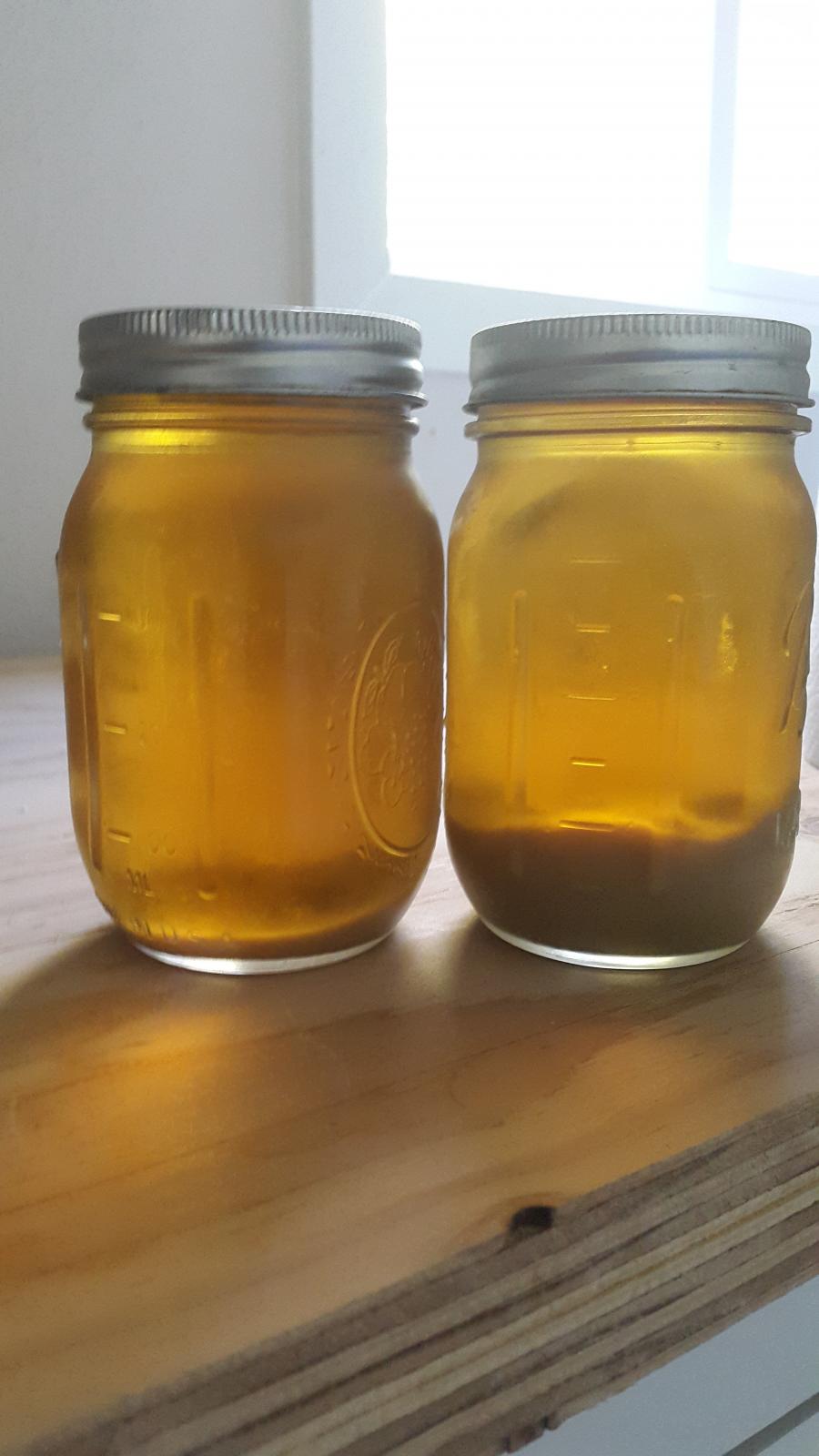fab80
Active Member
This is a picture of two jars containing both the same washed yeast from a batch I brewed with wlp007. I got 4 pint-jars out of the yeast cake. These are the two jars containing the most amount of yeast and the one containing the least amount of yeast. Now, I know you should (must) make a starter with that washed yeast. But let's say I need to have a 2qt starter for my beer, how would using the yeast from one jar compared to the other one be different?




